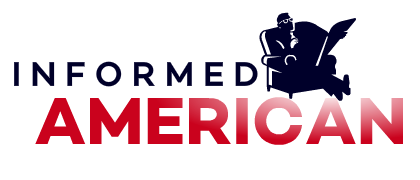
We all like to think back on the good old days. Times when men were men, families were intact, and the world was at peace.
But frankly, it wasn’t always like that. Some decades were better than others, and there are some decades we’d just as soon forget.
But now this group of experts are issuing a dire warning that the American economy is similar to one of the worst decades in US history.
1970s stagflation looms large
Several Wall Street strategists are beginning to worry that the US economy could be careening toward a 1970s-style stagflation scenario.
Consistently high inflation paired with a cooling economy has led several inflations reports during the first three months of 2024 to come in well above estimates.
Those reports are fueling fears that inflation could be much tougher to beat than experts once believed.
Economic growth during the first quarter also struggled, only rising at an annualized rate of 1.6%, which is the slowest since 2022.
David Donabedian, chief investment officer of CIBC Private Wealth US, said, “This was a worst of both worlds report: slower than expected growth, higher than expected inflation. The biggest setback is the acceleration in core inflation, and in particular, the services sector rising above a 5% annual rate.”
When economic stagnation and high inflation combine, it’s known as “stagflation” and is often regarded as a worst-case scenario for the Federal Reserve.
Stagflation hit the US economy hard in the 1970s and early 1980s amidst skyrocketing oil prices, rising levels of unemployment, and easy monetary policy.
That combination pushed the consumer price index as high as 14.8% in 1980, prompting the Federal Reserve to raise interest rates to nearly 20% during that time.
In 2022, fears about stagflation were fueled when the Fed started aggressively hiking interest rates to cool inflation, but they dissipated in 2023 when some signs showed pressures were loosening without hurting economic growth.
Now, as economic growth slows again, inflation is likely to stick around for much longer than expected.
A tough battle ahead
Inflation has fallen from a peak of 9.1%, but progress has flatlined since the summer.
The latest government data shows the CPI jumped 3.5% in March – the highest level in six months.
JPMorgan Chase CEO Jamie Dimon is one of the most vocal experts who has been sounding the alarm about a potential return to 1970s-style stagflation.
“I think there’s a chance that can happen again. I worry it looks more like the ‘70s than we’ve seen before,” said Dimon.
Federal Reserve Chair Jerome Powell also recently said a “lack of further progress” this year on inflation will likely lead to interest rates remaining the same, or even potentially increasing rather than being cut.
Investors had hoped for more aggressive rate cuts this year, but they’ve now loosened expectations due to the hot inflation reports and new messaging from the Fed.
Increases in interest rates put pressure on consumer and business loans, slowing down the economy and forcing employers to cut back on their spending.
These higher rates have pushed the average 30-year mortgage rate above 7% for the first time in years, while borrowing costs for auto loans, home equity lines of credit, and credit cards have also jumped.
Informed American will keep you up-to-date on any developments to this ongoing story.










